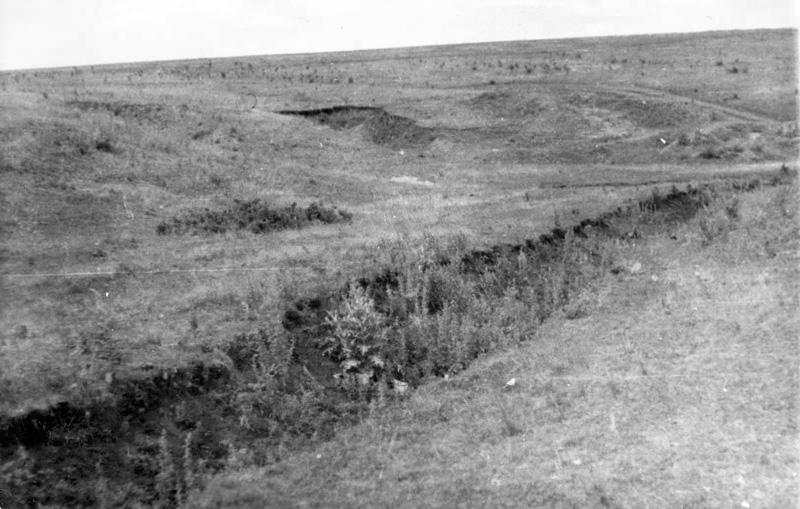In the early twentieth century there were 11,000 Jews living in Kharkov, a city situated outside the Pale of Settlement. The Jewish population grew rapidly under Soviet rule and reached some 130,000 by the late 1930s.
When Germany attacked the Soviet Union in summer 1941, more than 100,000 Jews left the city and headed east—some of them were included in the officially organized evacuation, while others fled independently. The Germans occupied Kharkov on October 23, 1941. A census performed at the Germans’ behest counted 10,271 Jews in Kharkov, but it is probable that some Jewish inhabitants were not registered. The Germans allocated scanty food rations to the general population and ruled that Jews should be given 40 percent of the standard ration.
In the beginning of November 1,000 hostages, primarily Jewish, were executed in reprisal of a bombing of buildings housing German institutions and offices.. Jews were dismissed from their jobs in public institutions, and they were ordered to wear special armbands. A unit of Sonderkommando 4a under the command of Paul Blobel arrived in city. In coordination with the municipality the Jews were were given two days to move into barracks of a machinery plant located in the tractor factory zone. They were escorted by policemen, abused, dispossessed, and forced to sleep outdoors. Many Jews froze to death and 305 were murdered.
The barbed-wire enclosed ghetto consisted of twenty-six barracks that lacked running water, heat, doors, and windowpanes. Guards were posted around the ghetto and its inhabitants were forbidden to leave on pain of death. Food was not supplied and could not be purchased. Women were allotted one hour a day, at noon, to draw water from a well. Many Jews were compelled to drink melted snow. The inhabitants of the crammed barracks were forbidden to evacuate the bodies of the many who died of starvation or disease. Looting of Jewish property persisted, and the Jews were forced to provide the police with warm clothing and to supply money for liquor at Christmas-time.
On December 24, 1941, the Germans killed some 200 mentally ill Jews. Two days later, on December 26, Jewish volunteers were enlisted for labor in Poltava, Romny, and Kremenchug*. Trucks pulled into Kharkov the following day, and the approximately 500 volunteers were packed aboard, driven out of the city, and murdered. Another five hundred Jews were killed between that time and the end of the month.
The ghetto was liquidated on January 2–8, 1942. The ill and the disabled were driven in trucks, while others, guarded by the Waffen SS and the SD, were marched to the murder site—two large trenches that had been dug at Drobitskii Yar, near the city. The Jews were murdered by members of the Schutzpolizei. By the end of 1942, another sixty-four Jews had been captured and murdered in Kharkov.

